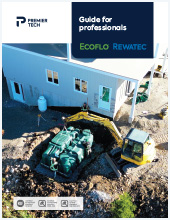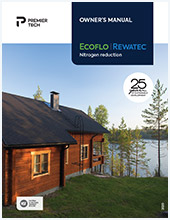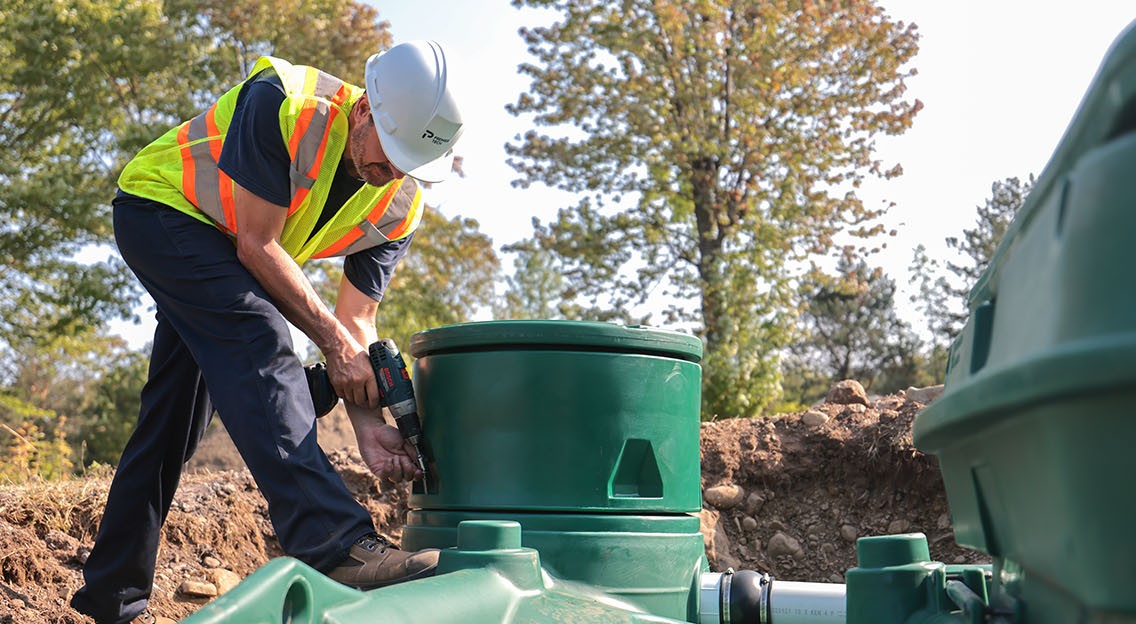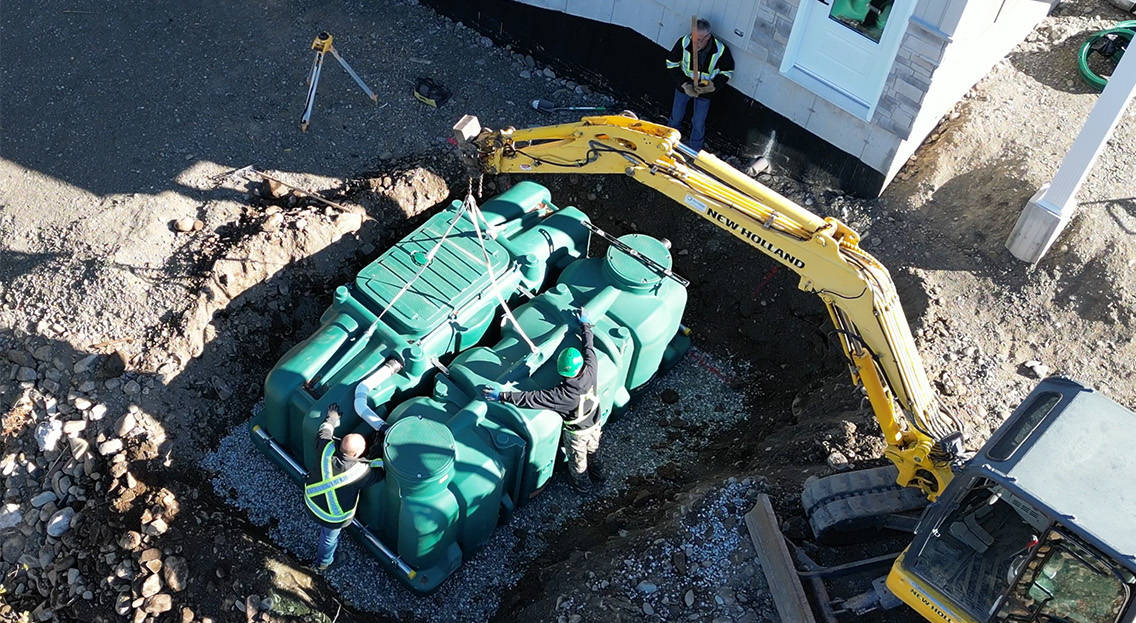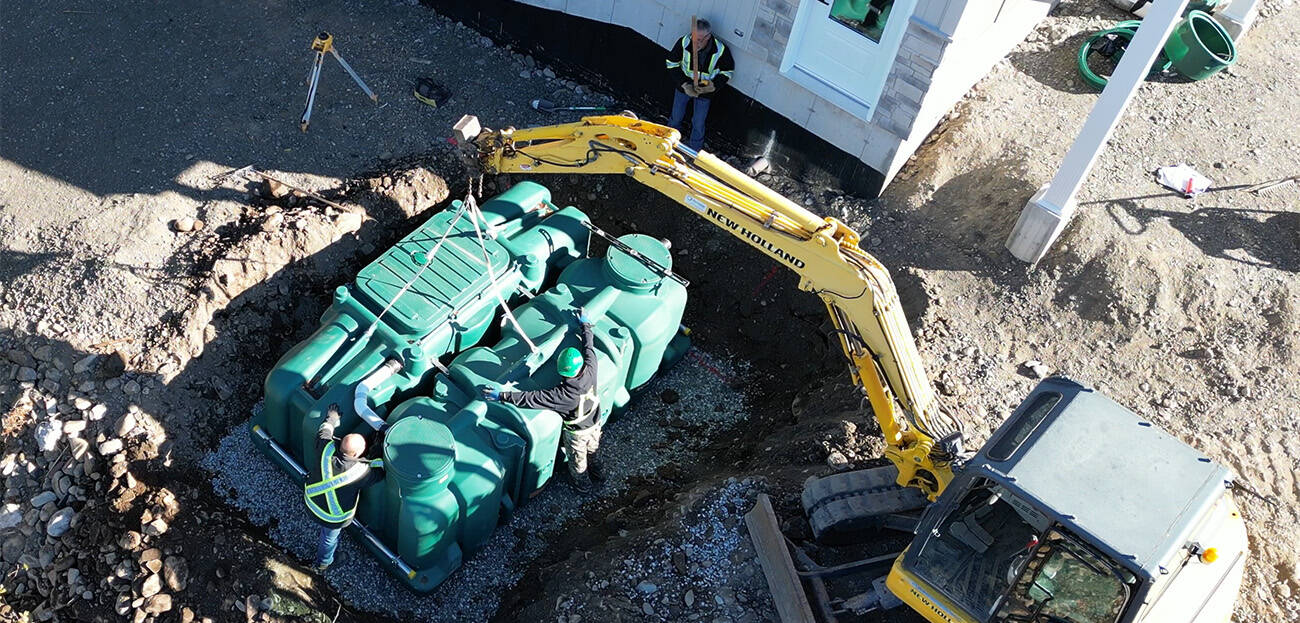Nitrogen reduction
Boost the performance of your wastewater treatment system with our nitrogen reduction options. Proven and all-natural, these solutions protect public health and the environment from the damaging effects of nutrient contamination.
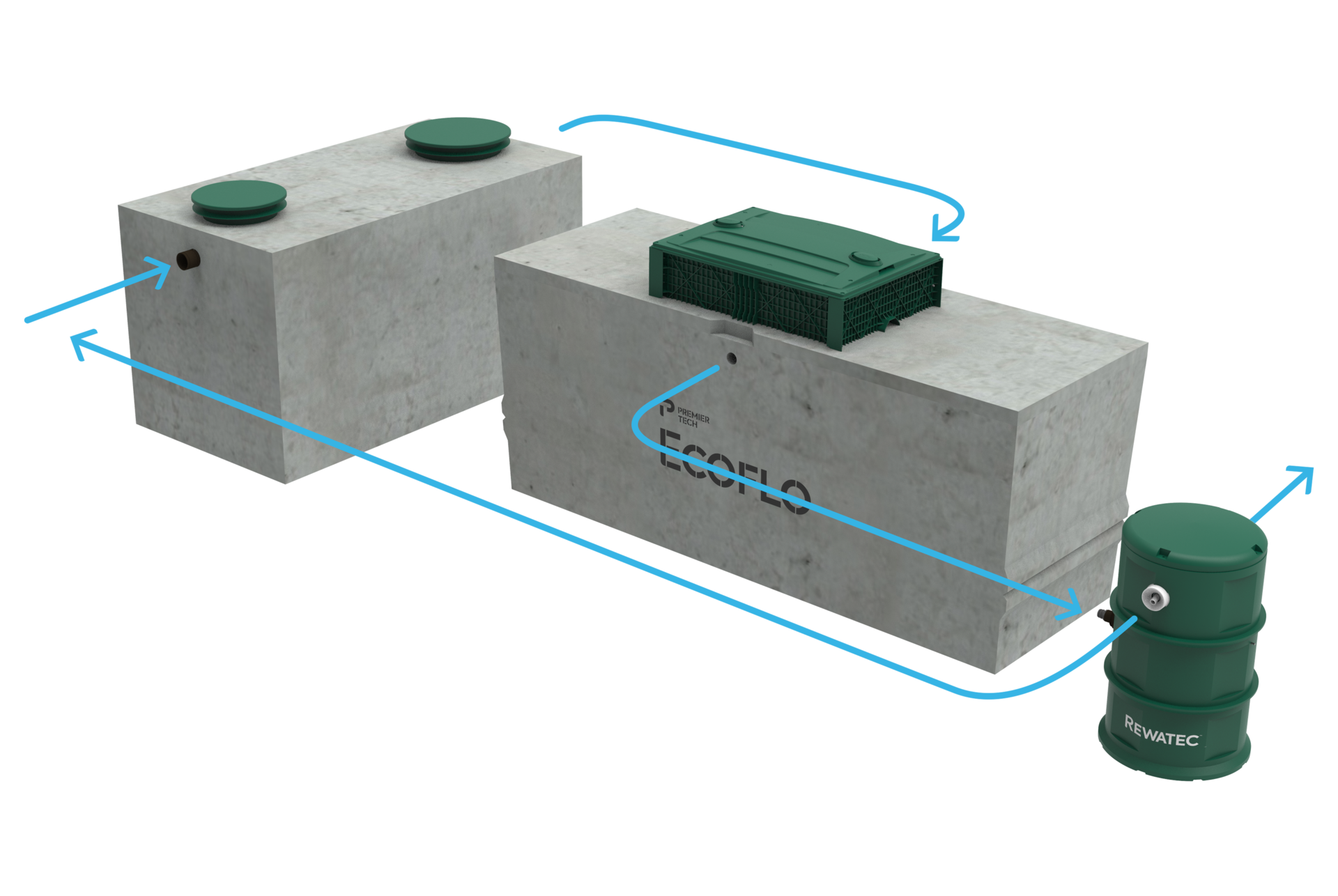
Prevents property contamination
Preserves lakes and rivers
Protects public health
Integrated with our Ecoflo compact biofilter
Compact and discreet
Never damages landscaping
Ideal for all treatment systems
Processes tailored to your needs
Exceptional results in all seasons
What is nitrogen reduction?
Nitrogen reduction is a wastewater treatment solution for areas where effluent standards have been strengthened to protect public health and the diversity of delicate ecosystems.
Our nitrogen reduction options are easily integrated with our Ecoflo compact biofilter (ECDn models) or added to the processes of commercial and municipal treatment plants.
They safely convert ammoniacal nitrogen into harmless nitrogen gas, helping keep pollutants out of groundwater and away from the lakes and rivers near your property.
Why remove nitrogen from wastewater?
Nitrogen is a nutrient, a building block for plant life. But it’s also a pollutant in wastewater.
When an inadequate treatment system discharges nitrogen compounds into the environment, they eventually end up in groundwater and nearby watercourses. Once there, they can cause lasting damage.
Groundwater contaminated with nitrate (a nitrogen compound) is a serious public health concern. High nitrate concentrations in drinking water reduce our blood’s ability to transport oxygen. For infants, this form of oxygen deprivation can lead to a condition called methemoglobinemia, more commonly known as blue baby syndrome.
Lakes and rivers enriched with too much nitrogen become a breeding ground for excessive algae growth. These blooms prevent sunlight from reaching plants below the surface. As native species die, bacteria that feed on decaying plant matter multiply, consuming more and more oxygen until the water can no longer support life.
The cost of nitrogen contamination is significant, not only for our environment, but also for our health and economy:
- human illnesses and death
- livestock poisoning
- invasions of non-native species
- reduced biodiversity
- toxins and deformities in fish
- reduced waterfront property values
- limited enjoyment of lakes and rivers
- lost revenues for commercial fisheries
We recognize the dangers of this problem and we are proud to offer a solution: safe, effective, and reliable wastewater treatment with Rewatec nitrogen reduction technologies.
How do our nitrogen reduction systems work for homes and cottages?
Primary tank
Wastewater first flows into a primary tank. Solids settle on the bottom of the tank and liquids flow into the Ecoflo compact biofilter for treatment.
Ecoflo compact biofilter
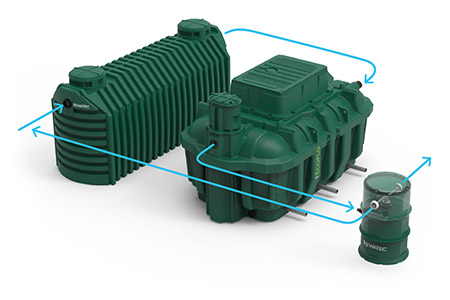
Wastewater passes through the biofilter, percolating through an organic filtering medium that traps and removes pollutants. Ammoniacal and organic nitrogen are naturally converted into nitrates as part of this process.
After wastewater passes through the filter, it is pumped into a flow divider tank.
Flow divider and final dispersal
The pressurized flow divider returns one portion of treated wastewater to the primary tank, where nitrates transform into harmless nitrogen gas that is released into the air.
The remaining portion of treated wastewater is discharged and safely returned to the environment.
How do our nitrogen reduction systems work for businesses and communities?
Ammonification
Nitrogen that enters a sewer system is mostly in the form of organic compounds, such as those found in urine and fecal material. When these compounds mix with wastewater, a natural process quickly converts them into ammonium.
Nitrification
Nitrogen removal processes can be adapted to any of our commercial, community, municipal, or industrial treatment systems:
- Ecoflo compact biofilter clusters
- Rewatec membrane bioreactors (MBR)
- Rewatec moving bed biofilm reactors (MBBR)
When wastewater enters a treatment system, specialized bacteria called nitrifiers feed on available ammonium, converting it through a two-step process into a nitrogen compound called nitrate.
Following this process, wastewater is circulated away from the oxygen-rich zone favored by nitrifiers, and into an anoxic (oxygen-depleted) zone for further treatment.
Denitrification
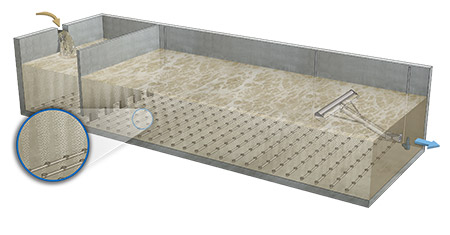
In the anoxic zone, there is another group of specialized bacteria called denitrifiers.
Denitrifiers do not require dissolved oxygen to breathe. Instead, they use the oxygen molecules attached to nitrate, breaking down the compound and producing harmless nitrogen gas that is released into the air.
After denitrification, wastewater continues downstream for additional treatment and, later, safe dispersal into the environment.
Nitrogen reduction system maintenance for homes and cottages
We have a network of local service partners, annually trained by us to maximize the life of your Ecoflo compact biofilter and to protect your investment in your installation.
- 15-point Ecoflo compact biofilter inspection
- filter aeration to promote healthy bacterial activity
- filter scarification to ensure optimal biofiltration
- verification of flow divider components and performance
Nitrogen reduction system maintenance for businesses and communities
Our network of technicians and local service partners is trained by us to maximize the life of your commercial, community, municipal, or industrial Rewatec nitrogen reduction system.
When a technician visits your property, they will:
- inspect all components, including electromechanical equipment
- verify treatment performance
- adjust processes to maximize system performance (when required)
Nitrogen reduction system warranty
Our 8-year warranty for residential nitrogen reduction systems includes:
- all treatment-related parts and labor
- no clogging, excess sludge, or substandard performance
|
|
|

